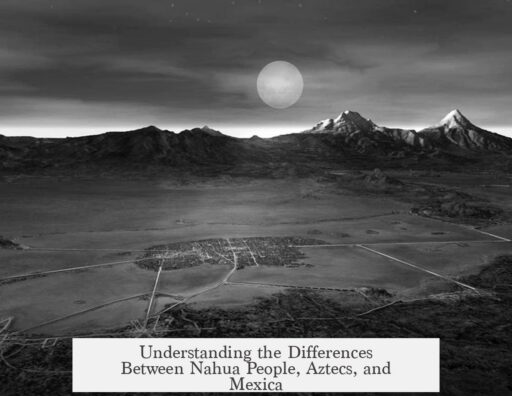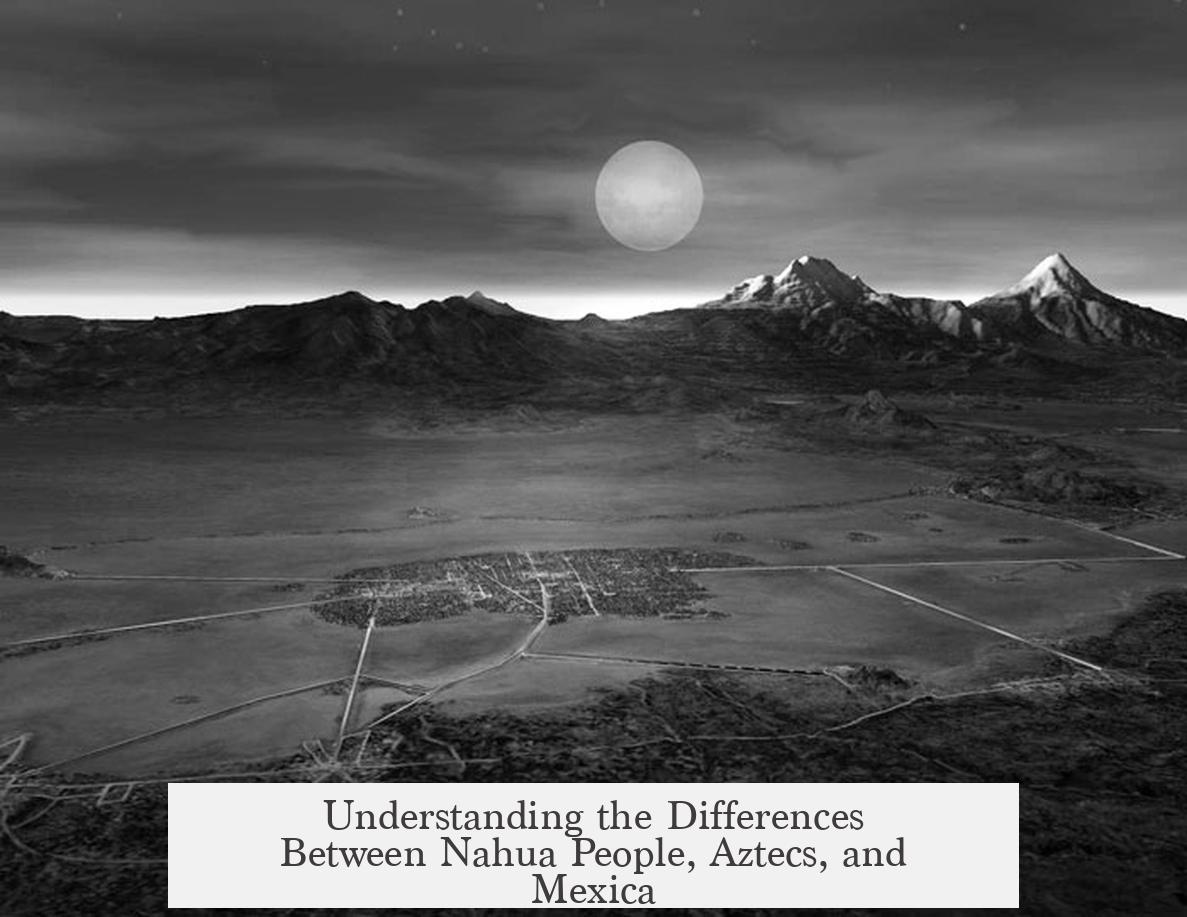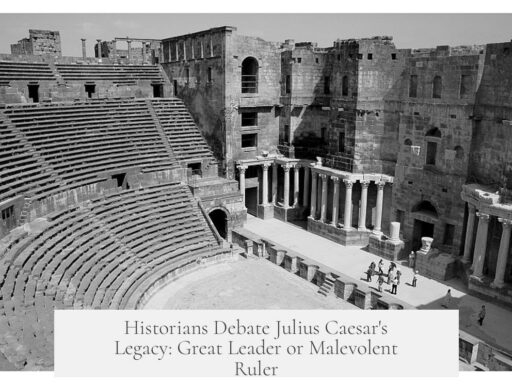The difference between Nahua people, Aztecs, and Mexica lies in their scope and historical context. The Nahua represent a broad ethnolinguistic group speaking the Nahuatl language. Mexica denotes a specific Nahua subgroup that migrated into the Valley of Mexico and founded Tenochtitlan. The term Aztec is often used to describe the Mexica and their allies in the Aztec Triple Alliance but originally means people from the mythical Aztlán.
The Nahua people form a large linguistic and cultural group. Their language, Nahuatl, belongs to the Uto-Aztecan language family, which spans regions from the southwestern United States to Central America. Nahuatl was a lingua franca in Mesoamerica before European contact and continues to be spoken by millions in modern Mexico. The term Nahua does not refer to a single political entity but to multiple communities linked by language and shared cultural traits.
The Mexica are a subset within the Nahua. They emerged as a distinct group around 1000 CE, migrating south from northern Mexico due to increasing desertification. The Mexica settled in the Valley of Mexico, where they founded the cities of Tenochtitlan and Tlatelolco. Their migration caused significant upheaval among earlier inhabitants. Ultimately, the Mexica became highly influential through military and political success.
‘Aztec’ originally means a person from Aztlán, an ancestral homeland described in Nahua legends. In scholarly usage, Aztlán sometimes denotes the Nahuatl-speaking regions. By the 19th century, the term Aztec referred specifically to the alliance of three Nahua groups: the Mexica, Acolhua, and Tepanecs. This alliance formed the Aztec Empire or Triple Alliance. The Mexica dominated this coalition, so popular use of Aztec often means the Mexica of Tenochtitlan, who conquered the Mexica city of Tlatelolco in 1473 CE.
| Term | Definition | Scope | Example |
|---|---|---|---|
| Nahua | Speakers of Nahuatl language | Broad ethno-linguistic group | Millions of Nahuatl speakers across Mexico today |
| Mexica | Specific Nahua group | Migrated to and settled in Valley of Mexico | Founders of Tenochtitlan and Tlatelolco |
| Aztec | People from Aztlán; later the Triple Alliance | Mexica, Acolhua, Tepanecs forming empire | Aztec Empire dominated by Mexica |
- Nahua are the broad Nahuatl-speaking peoples.
- Mexica are a particular Nahua group who founded Tenochtitlan.
- Aztec originally means people from Aztlán, then the Triple Alliance.
- Aztec Empire was led by Mexica, with Acolhua and Tepanecs.
- Nahuatl remains widely spoken in modern Mexico.
What Exactly Is the Difference Between Nahua People, Aztecs, and Mexica?
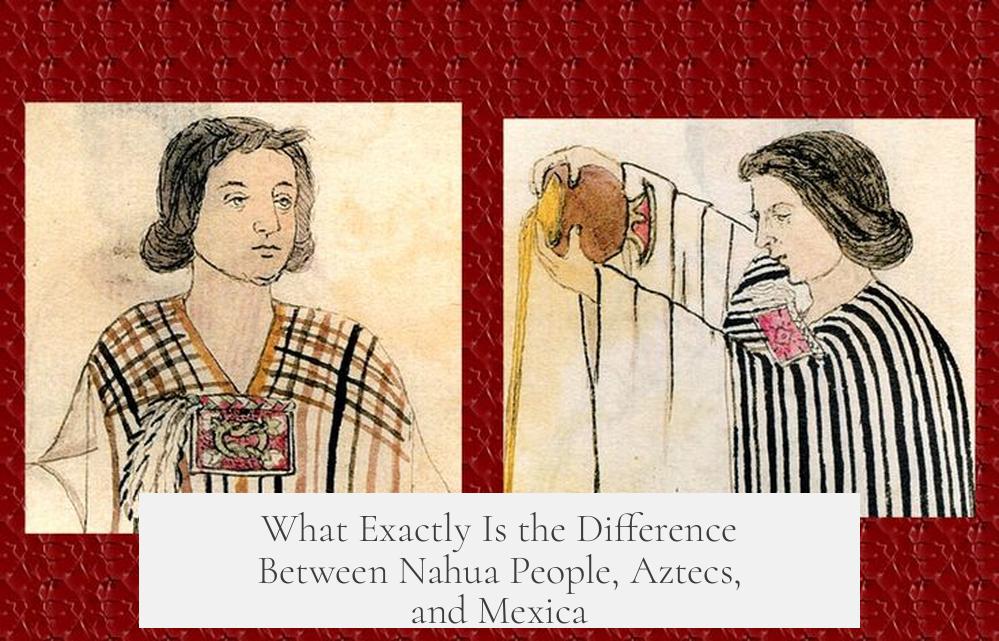
When people talk about the Nahua, Aztecs, and Mexica, it’s easy to get wrapped up in a big historical spaghetti bowl of terms. Imagine ordering a plate of spaghetti but mixing up the sauce names, the pasta, and the meatballs—confusing, right? The same happens with these terms, which are related but not identical. The key difference is that “Nahua” refers to a broad linguistic and ethnic group, “Mexica” is a specific subset of Nahua people, and “Aztec” is a somewhat flexible term tied to origin myths and later political alliances, especially the Mexica-led empire.
Let’s unravel this age-old Mexican mystery with clarity, some history, and a splash of context.
Who Are the Nahua?
Think of the Nahua people as the umbrella category—like the word “apple” that covers Granny Smith, Fuji, and Gala. Nahua is primarily a linguistic group. These folks speak Nahuatl, a language that belongs to the Uto-Aztecan family. This language clan stretches like a linguistic highway from the US Southwest down through Mexico and into Central America. That’s a vast territory!
At the time Europeans barged into the New World, Nahuatl served as the lingua franca—the common tongue—of Mesoamerica. It was the go-to language for trade, politics, and cultural exchange. Importantly, millions still speak Nahuatl in Mexico today, maintaining rich traditions and stories.
If you overhear someone mention “Nahua,” it’s generally about the speakers of Nahuatl and their descendants. The Nahua aren’t one monolithic tribe or empire; they’re an ethnic classification covering many communities across Mexico.
Meet the Mexica: The Nahua’s Famous Cousins
Among the Nahua, there’s a famous crew called the Mexica. They are a specific Nahua subgroup who make headlines in history books. Here’s why: around 1000 CE, as the northern deserts of Mexico got hotter and drier, some semi-nomadic groups—generally called Chichimeca—migrated south to greener, more fertile lands. The Mexica were part of this wave.
They arrived in the Valley of Mexico peacefully… well, sort of. Being the last major group to show up caused a bit of a stir. Imagine crashing a family reunion when everyone else already settled. They founded the twin cities of Tenochtitlan and Tlatelolco, which later became seats of power.
The Mexica are the creative minds behind what we often call the “Aztec Empire.” But remember, they’re just one branch on the Nahua family tree, albeit the most dominant and historically significant.
So, What About the Aztecs?
The term “Aztec” has its own twists. Its original meaning in Nahuatl is a “person from Aztlán.” Now, what’s Aztlán? It’s a legendary place—the supposed ancestral homeland of several Nahua peoples. Scholars also use Aztlán as a convenient label for the geographic origin of the Nahuatl language itself.
Fast-forward to the 19th century, and the term “Aztec” got a modern makeover. Scholars started using it to refer specifically to the alliance of three Nahua groups: the Mexica, Acolhua, and Tepanecs. This coalition formed what’s famously called the Aztec Empire or the Triple Alliance.
Within this trio, the Mexica were clearly the star players. They dominated the alliance politically and militarily. When most people say “Aztecs,” they’re usually thinking of the Mexica of Tenochtitlan in particular. Fun fact: In 1473 CE, the Mexica conquered their sister city, Tlatelolco—talk about sibling rivalry!
Untangling the Terms in a Nutshell
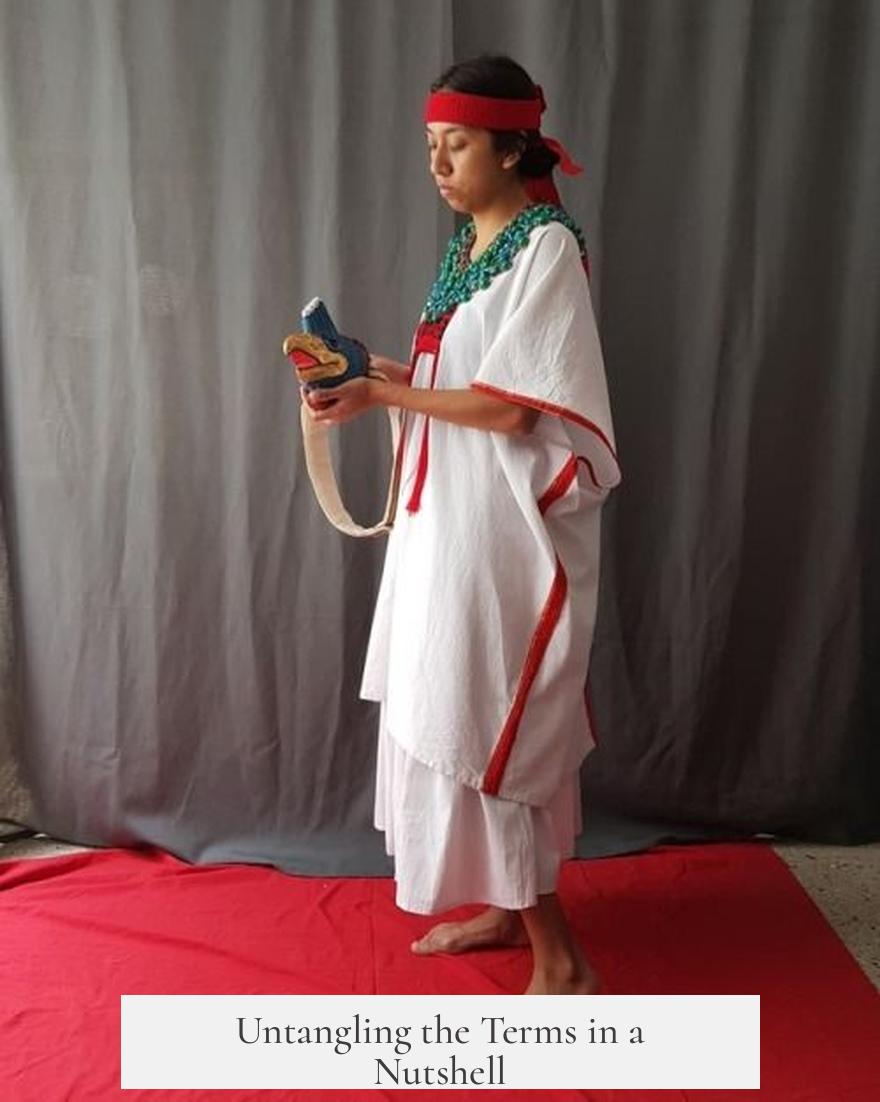
| Term | Definition | Scope | Key Fact |
|---|---|---|---|
| Nahua | Speakers of Nahuatl language and their ethnic descendants | Broad (many groups across Mexico) | Lingua franca of Mesoamerica; millions of speakers today |
| Mexica | Specific Nahua group who migrated to the Valley of Mexico | Narrower (subset of Nahua) | Founded Tenochtitlan and Tlatelolco; last major Nahua migrants |
| Aztec | Person from Aztlán; used for Nahua Triple Alliance groups | Variable (mythological geographic origin to political empire) | Often synonymous with Mexica of Tenochtitlan today |
Why Does This Matter Today?
Understanding these distinctions isn’t just academic nerdiness. It matters deeply to identity and culture in Mexico and beyond. Nahua communities today proudly maintain their language and heritage. The Mexica legacy is alive in Mexico City’s roots, the giant ruins, and vibrant cultural ceremonies. Meanwhile, the word “Aztec,” although globally famous, is partly a modern invention used to simplify history.
Moreover, using the right term respects the complex tapestry of peoples and histories that shaped modern Mexico. Calling every Nahua person “Aztec” would be like calling every Italian a Roman—historically connected but oversimplified.
Quick Tips for Remembering the Differences
- Think language first: Nahua equals Nahuatl speakers—the big family.
- Think subgroup with cities: Mexica are Nahua with a capital city flair.
- Think empire and myths: Aztec is a political and mythological label often for Mexica-led empire.
So next time you hear someone say “Aztecs,” you can confidently nod and add, “Well, that often means the Mexica, part of the Nahua people who speak Nahuatl.”
“History is complex but truly fascinating when you dive beneath the surface.”
If you’re curious about the living Nahua today, or fascinated by how the Mexica built their empire, dive into the linguistic heritage and archaeological discoveries. Not just ancient code words—these are vibrant cultures with stories still unfolding.
